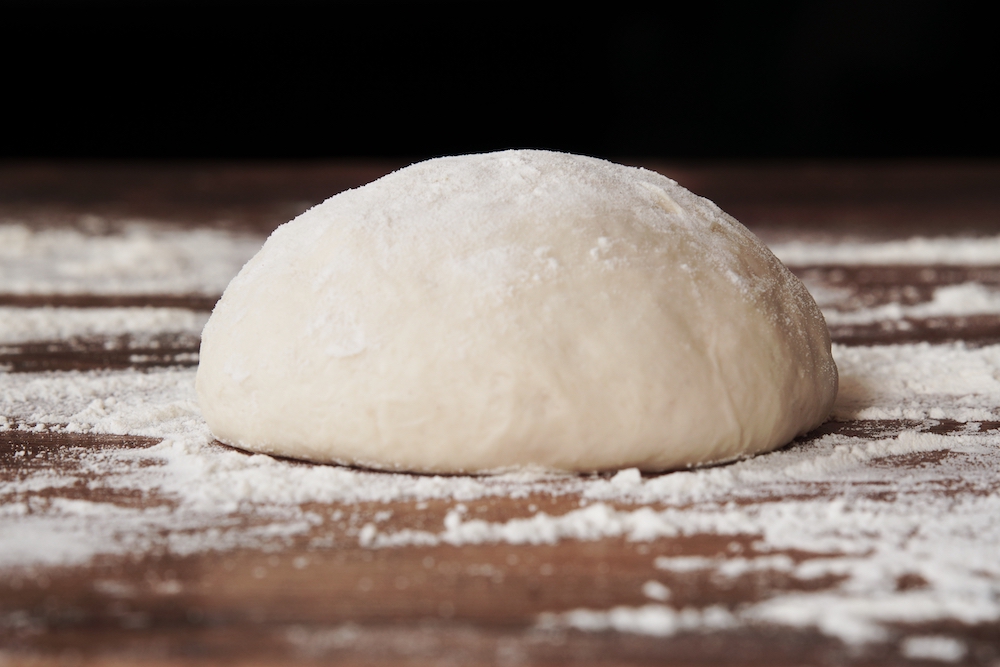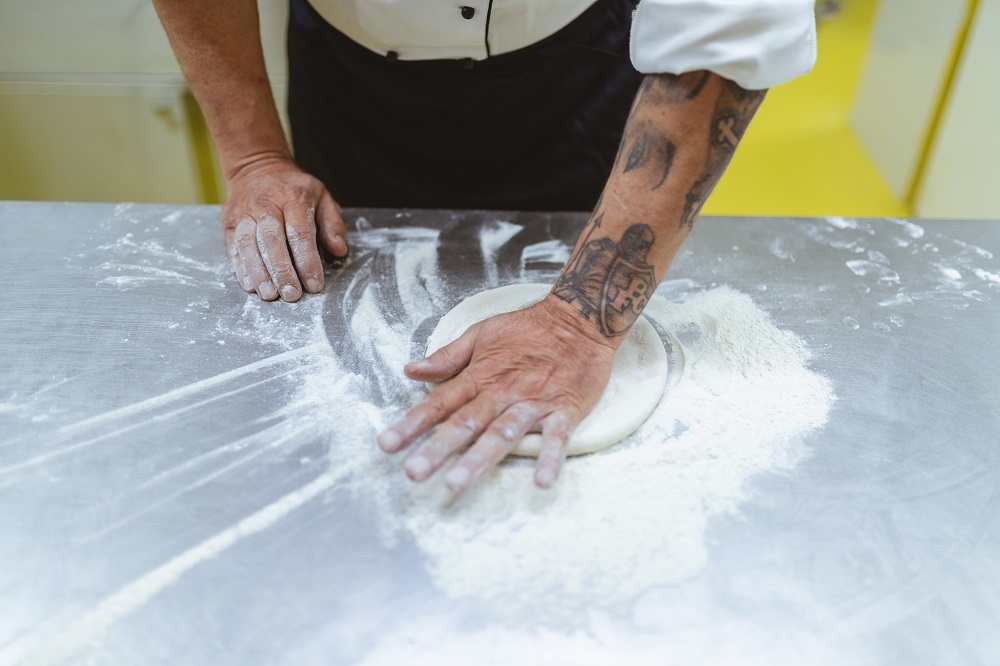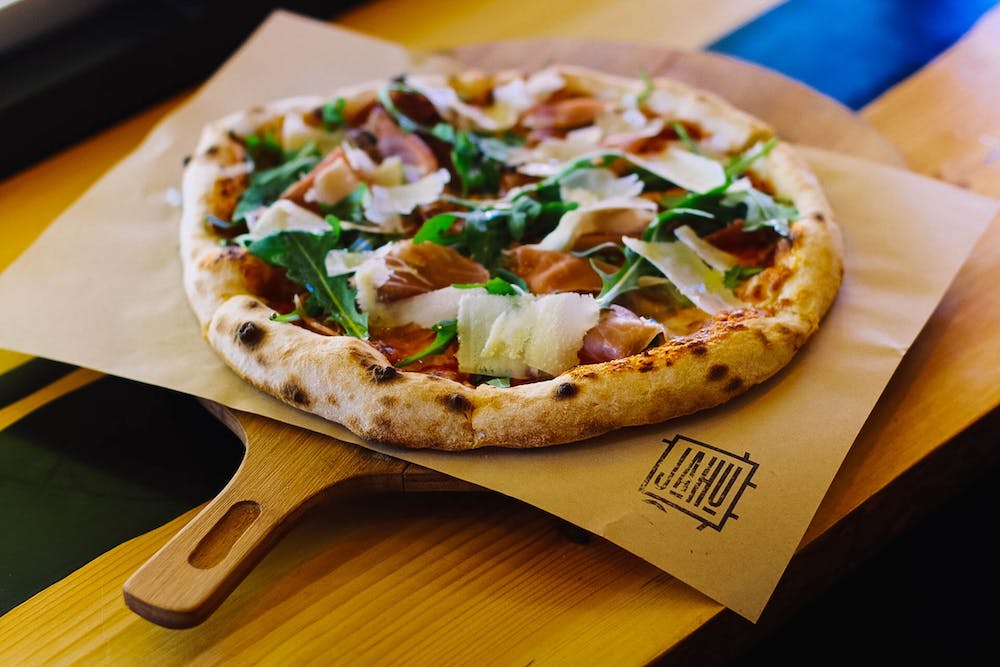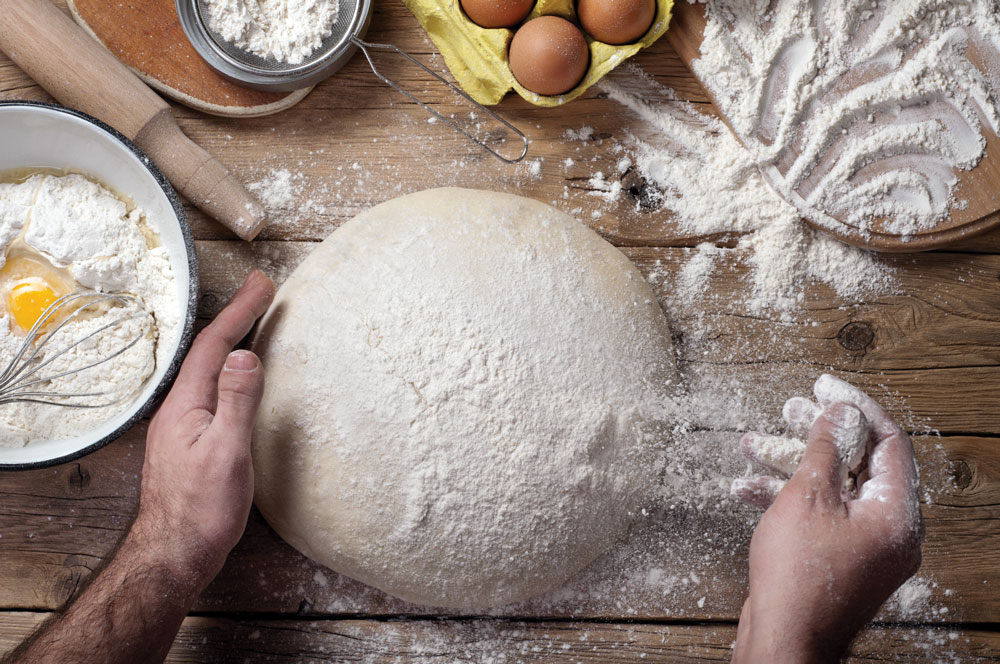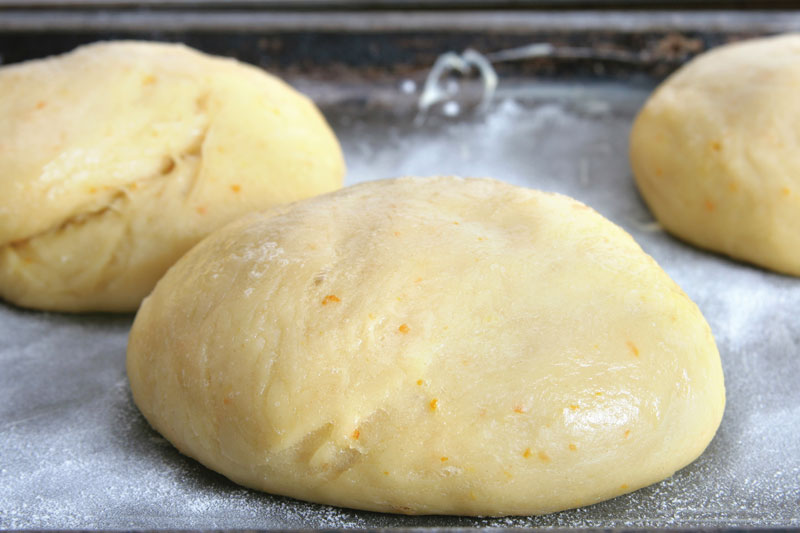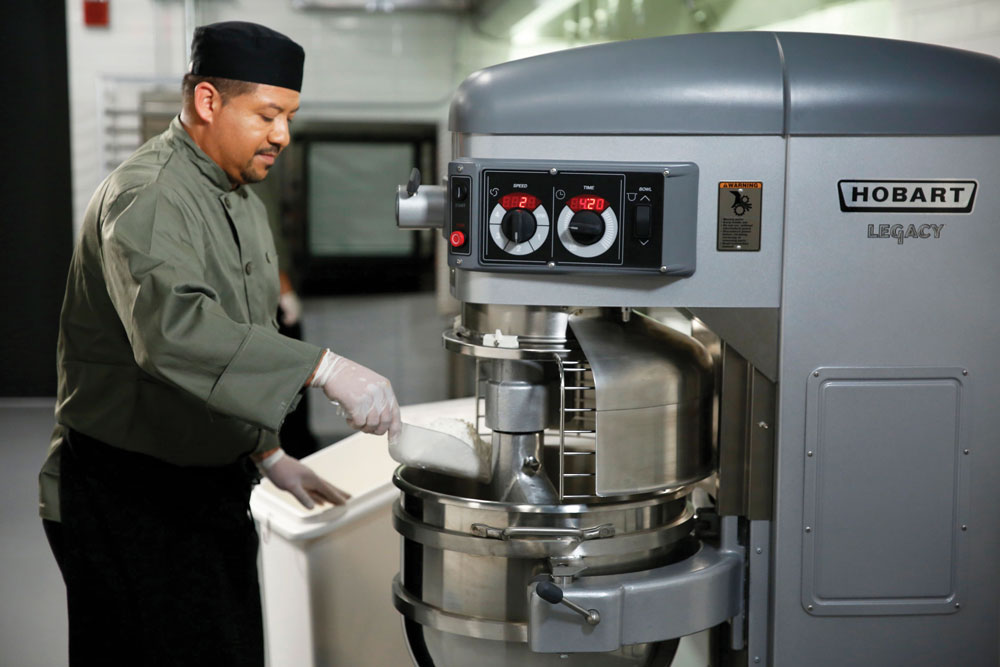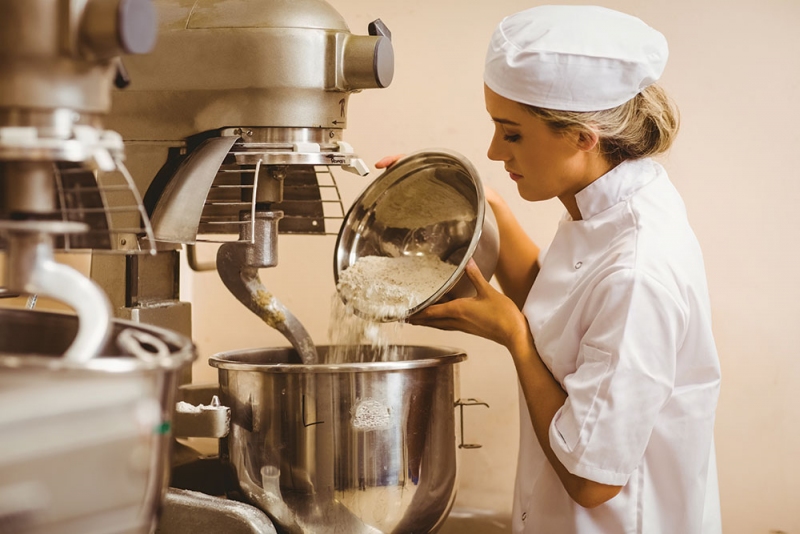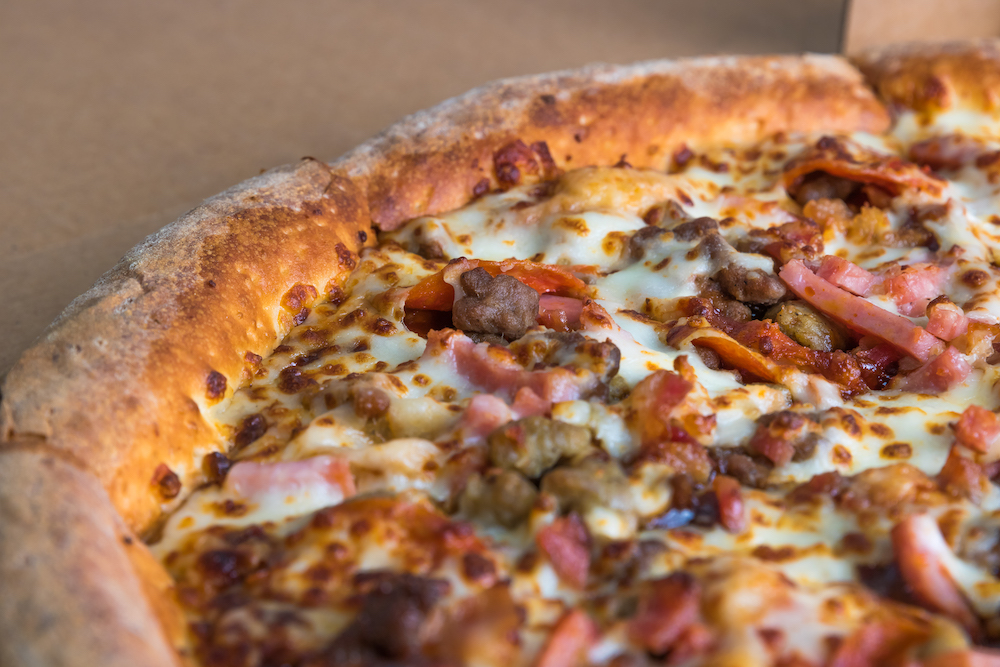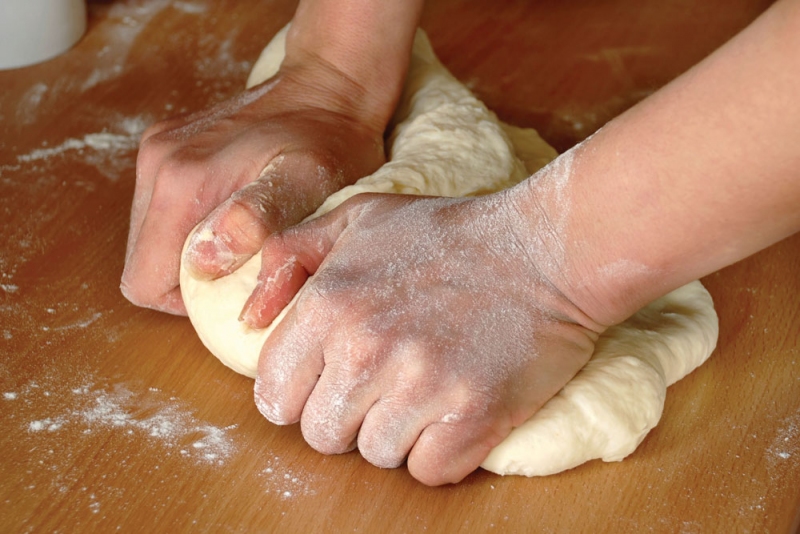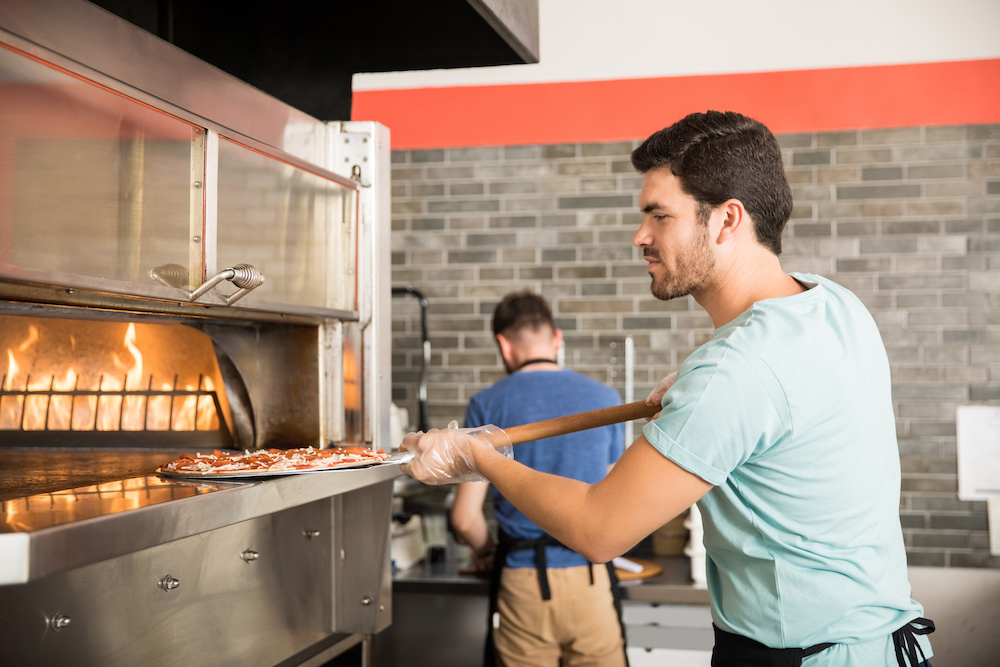Take and Bake pizza has been with us for many years now, we just never recognized it for what it was. At one time customers would ask us to only partially bake the pizza for them, so they could finish it off in their oven at home. Then came the deli pizza. This is the one that was purchased at the supermarket and we paid for it by the pizza or by the pound. Sometimes we could even specify the kind and amount of toppings. In both cases the pizza was constructed on a raw dough crust and intended to be fully baked by the consumer in their home oven. For the most part, these deli pizzas were constructed on nothing more than a pretty regular pizza crust dough, which was mixed cold/cool and kept cold in a reach-in cooler until the pizza was constructed to fill an order.
Deli pizzas are still with us and for the most part they are still enjoying popularity. This is especially true when you consider the convenience factor of being able to do your grocery shopping and at the same time pick up a pizza for lunch or dinner that can be served at home, fresh and hot later that day or even on the following day.
For the most part, to make a deli version of a take and bake pizza, you can use your favorite pizza crust formula. Recommended changes are to reduce the yeast level to not more than 1.0 percent of the flour weight as compressed (wet) yeast. Keep the dough cool as you are mixing it by using all cold water in the dough. The ideal dough temperature after mixing is between 75° and 85°F. Even if the dough temperature exceeds this by a bit the dough will still function well, but do not exceed 90°F.
After mixing, immediately scale the dough into the desired weight pieces and round them into balls. Wipe the dough balls with a little vegetable oil and place them into covered dough boxes to rise for 2.0 to 2.5 hours. Shape the dough pieces to the target size and place onto special, oven friendly trays or onto sheets of parchment paper with a cardboard pizza circle beneath to provide the necessary support. Place the formed dough piece into the cooler to cool down thoroughly, then cover with a sheet of plastic or a plastic bag to prevent excessive drying.
To fill an order, remove a formed dough piece (crust) from the cooler, leaving it on the tray or parchment paper and pizza circle. Apply the sauce. This sauce should be somewhat thicker than most "run of the mill" pizza sauces. This is to help prevent the unwanted soakage of water from the sauce into the dough. Then, apply the cheese and other toppings as needed. The completed pizza is then ready to be stretch or shrink wrapped for the consumer to take home. If you use an oven friendly tray the pizza should remain on the tray, even while the pizza is being baked. If you used parchment paper under the dough, the pizza must be carefully slid into the oven on the parchment paper from the cardboard pizza circle. Once the pizza has completed baking it is usually carefully slid back onto the pizza circle for serving.
The "true" take and bake pizza that is making the big waves in the industry today is made from a more specialized dough than the common deli pizza. This dough differs in that it has been modified through formulation to allow it to rise even under some of the most adverse conditions that a pizza might be exposed to. Generally, a high protein content flour is used, having from 13 to 14.5 percent protein. This might best be described as a typical, pizza flour. The high protein content of this flour provides the necessary strength to the flour to allow it to stand up to potential abuse such as being frozen in a home freezer, or being held beyond its recommended shelf life in a consumer's refrigerator.
Additionally, these doughs contain less yeast than regular pizza doughs. This is due to the fact that they will be exposed to some temperature abuse/variation while the consumer transports the pizza to their home. Consumers may also allow it to sit out on a counter while the oven is heating up, or it might be placed into the refrigerator for baking at a later time. With yeast levels associated with pizzeria production, the dough could become excessively gassy under these conditions, leading to a failed product and a dissatisfied customer.
The new twist to the production of take and bake pizzas has to do with the addition of a small amount of chemical leavening to the dough. A combination of sodium aluminum phosphate (SALP) and baking soda provide the chemical leavening action, which produces carbon dioxide to help leaven the dough. When using this approach to leavening, the yeast level is typically reduced to less than 1 percent of the flour weight, and a blend, comprised of equal weights of SALP and soda (between 0.25 and 0.5 percent of the flour weight) is added to the dough. It should be mentioned that the soda portion in this application must be fat encapsulated to ensure that it will not pre-react with any acids formed as a result of yeast fermentation between the time that the dough is made and the time that it is baked by the consumer.
Because the chemical leavening will not react until the dough is placed into the oven, it provides a high level of assurance that the dough will always rise sufficiently, even if the dough/pizza is subjected to conditions that might otherwise reduce the yeast activity to unacceptably low levels. With this dough formulation, the pizza dough will always rise, thus building a high level of consumer confidence and satisfaction in the pizza concept.
As part of the ever-changing evolution of the take and bake pizza concept, the search is on for ways to improve upon the flavor/taste of the crust. As it stands right now, the flavor is quite good, but it does not truly compare to the flavor of a pizzeria made dough/crust made from a dough having a significant amount of fermentation. This is because, for the most part, take and bake dough has received little or no fermentation by the time that it is consumed. I have been working on this issue for some time now and I feel that there is an effective solution to the issue. This solution involves the use of a "pre-ferment" also known as a "sponge" to those in the baking industry.
This process requires combining 50 to 60 percent of the total flour, all of the yeast, 55 percent of the water and mixing this sponge together at low speed for five to seven minutes. Ideally, the sponge should have a finished/mixed temperature of 80° to 85°F. After mixing, the sponge is set aside and allowed to ferment at room temperature for three to four hours. It is this fermentation period that allows for the development of a characteristic "pizzeria" flavor in the dough.
After the sponge has been fermented it is combined with the remainder of the dough ingredients and mixed just enough to form a smooth dough. The ideal dough temperature at this stage is 75 to 80F. This is accomplished by using a combination of cold water and ice to make up the remainder of water not already added to the sponge. Immediately after mixing, the dough is scaled to the desired weight, formed into balls, wiped with salad oil and placed into dough boxes or covered with a plastic sheet to prevent excessive drying. After the dough balls have been allowed to relax for about 30 minutes, they are ready to be shaped into pizza crusts. The shaped dough can be placed either into oven friendly paperboard trays or onto silicone sheets and taken directly to the cooler where the formed skins can be kept up to 24 hours or until needed to fill an order.
Take and bake pizzas made by this process have a proven flavor more like that of a pizzeria pizza while still maintaining all of the convenience and quality attributes needed in a take and bake pizza operation. As an additional benefit, the fermentation of the sponge contributes to the development of improved crispiness in the finished pizza over that of a more conventional take and bake pizza.
When packaging a take and bake pizza, make sure to include well tested directions for baking the pizza and directions for storing it at home if it will not be baked right away.
I truly believe that take and bake pizza is here to stay. It is providing the consumer with something that they have not been able to readily get in a traditional delivered or take out pizza, namely, a fresh, hot, and crispy product when they want it, where they want it. No, I don't think it will ever replace the traditional style of delivered and carry out pizza, but for those who embrace the concept, it will present an opportunity to provide the consumer with yet another convenient, delicious and profitable pizza.

